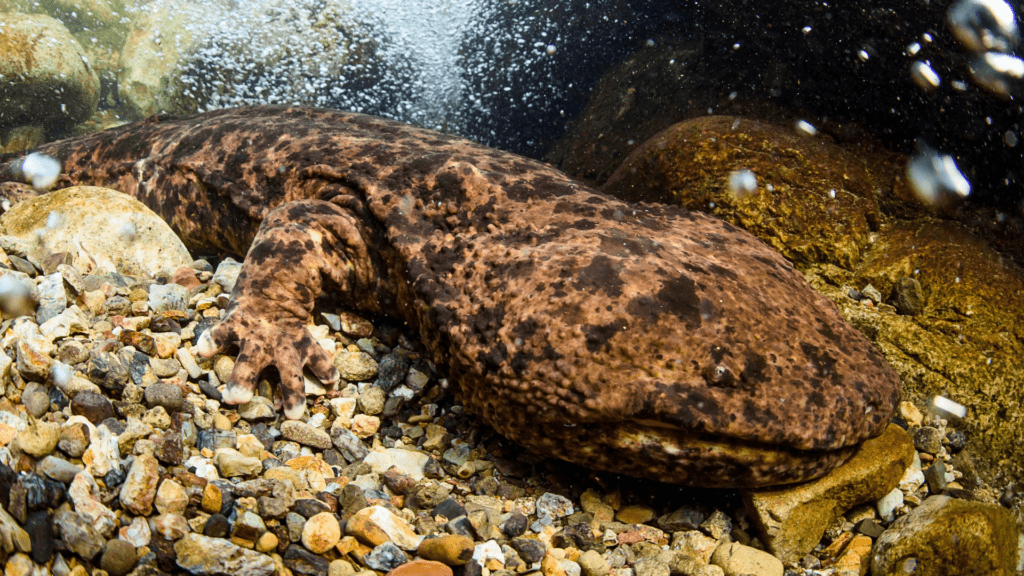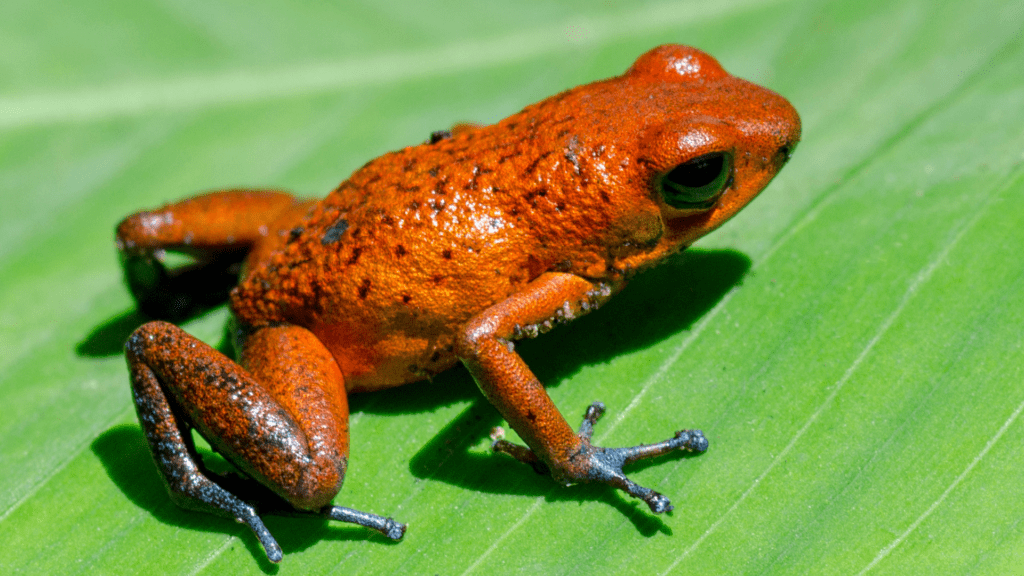Great Crested Newt (Triturus cristatus), also known as the Northern Crested Newt or Warty Newt, is a striking amphibian that has captured the attention of researchers and wildlife enthusiasts alike. As the largest of the three newt species native to Britain, it has a distinctive appearance and fascinating behavior patterns. These newts are notably threatened, and conservation efforts are in place to protect them from extinction.
Scientific Classification
- Kingdom: Animalia
- Phylum: Chordata
- Class: Amphibia
- Order: Caudata
- Family: Salamandridae
- Genus: Triturus
- Scientific Name: Triturus cristatus
Description
Great Crested Newt stands out with its larger size and unique features compared to other newt species. This species typically reaches 15 to 18 cm in length, with males often being slightly larger than females. The males are especially noted for their vibrant colors during the breeding season, which include a crest that runs along their back.
- Coloration: The body is dark brown or black with a bright orange underside. The sides are dotted with small white spots, giving the newt a distinctive pattern.
- Throat: Their throats are heavily mottled with dark pigments, providing camouflage when needed.
- Toes: The toes of the Great Crested Newt are strikingly marked with black and orange stripes, a feature that is more pronounced in males.
- Tail: The tail is short and ends in a small filament. Females exhibit a yellow-orange stripe along the lower edge of their tails, which further distinguishes them from the males. The tail lacks a sharp pointed tip and has well-developed fins.
Habitat and Distribution
Great Crested Newts are predominantly found across Britain, especially in Scotland and Wales, where they inhabit a variety of lowland habitats. They thrive in large, clear, and semi-permanent ponds, often found in rural or agricultural areas. These newts are particularly sensitive to habitat loss and pollution, making their habitats increasingly scarce.
Their distribution spans across Northern Europe, from France in the west to the Ural Mountains in the east. Despite their wide range, the Great Crested Newt is considered a protected species, with special conservation efforts in place across Europe.
Diet
Great Crested Newts (Triturus cristatus) are fascinating amphibians with a diverse and adaptable diet that plays a crucial role in their survival and reproduction. Here’s a more detailed look at their dietary habits:
Great Crested Newts are carnivorous and primarily feed on small aquatic and terrestrial invertebrates. Their diet varies depending on their life stage (larval vs. adult) and the availability of prey in their habitat.
Primary Prey
Aquatic Invertebrates
- Mollusks: Snails and small bivalves.
- Leeches: Commonly found in freshwater habitats.
- Crustaceans: Small aquatic crustaceans like water fleas (Daphnia) and freshwater shrimps.
- Insect Larvae: Mosquito larvae, mayfly larvae, and other aquatic insect larvae.
- Worms: Aquatic worms and nematodes.
- Protozoa: Microscopic organisms found in water.
Terrestrial Invertebrates
During their terrestrial phase (outside the breeding season), they feed on:
- Earthworms
- Slugs
- Spiders
- Beetles
- Other small arthropods.
Opportunistic Feeding
- Great Crested Newts are opportunistic predators and will consume almost any small prey they can overpower.
- They have been observed eating the eggs and larvae of other amphibians, including frogs and other newt species, particularly when food is scarce.
- Cannibalism has also been documented, especially in densely populated habitats where resources are limited.
Feeding Behavior
- They use their keen eyesight to detect movement and locate prey.
- Prey is captured using their sticky tongues or by lunging and grasping with their jaws.
- In the water, they are agile hunters, using their tails to propel themselves toward prey.
Seasonal Variations
- During the breeding season (spring and early summer), they spend most of their time in water and focus on aquatic prey.
- In the terrestrial phase (late summer to winter), they forage on land, often under logs, rocks, or leaf litter.
- During hibernation (winter), their metabolism slows down, and they rely on stored energy reserves rather than actively feeding.
Importance of Diet
- A varied diet ensures they receive the necessary nutrients for growth, reproduction, and survival.
- Their predatory role helps regulate populations of invertebrates, contributing to the balance of their ecosystems.
This varied diet supports their energy needs, especially during the colder months when they hibernate.
Behavior
Great Crested Newts exhibit a range of interesting behaviors:
- Nocturnal Nature: These newts are nocturnal, emerging during damp or wet evenings to hunt and explore.
- Breeding Display: During the breeding season, males perform elaborate displays to attract females. These displays can include tail waving and swimming in circles.
- Migration: Newts often migrate from their breeding ponds to feeding or hibernation areas. Their migration is seasonal and closely tied to their life cycle.
- Hiding Behavior: Throughout the day, they tend to hide under stones, logs, or vegetation, seeking shelter from predators and the elements.
Predators
Like many amphibians, Great Crested Newts face numerous predators, particularly when they are young. Their primary predators include:
- Grass Snakes
- Moorhens
- Mallards
- Kingfishers
- Herons
Great Crested Newts larvae are especially vulnerable to predation by fish species that inhabit the same ponds.
Adaptations
Great Crested Newt has developed several unique adaptations that help it survive in its environment:
- Good Swimmers: These newts are excellent swimmers, able to navigate water with ease to escape predators or move between habitats.
- Camouflage: To protect themselves from predators, they often use their natural coloring to blend into their environment. They may also curl up and pretend to be dead if they feel threatened.
- Toxic Secretions: The adult newts produce toxic secretions from their skin, which can deter potential predators.
- Regeneration: Like other amphibians, they have the remarkable ability to regenerate lost body parts, such as limbs and tail, if injured.
- Breathing Adaptations: While underwater, these newts absorb oxygen through their skin, a specialized feature that allows them to remain submerged for extended periods. However, they still need to surface occasionally for air.
Mating Season
The mating season of the Great Crested Newt is a fascinating period. Males gather in open water to perform courtship displays to attract females. These displays involve various movements, including tail waving and circling in the water. Males often become possessive, guarding females from other males during the breeding process.
- Breeding Behavior: After completing the courtship display, the male deposits a packet of germ cells in the female’s path. The female picks up the germ cells by positioning her reproductive organs over them.
Reproduction
The reproduction cycle of the Great Crested Newt is intricate and fascinating:
- Egg Laying: After mating, the female lays two to three eggs each day between March and July, eventually laying between 200 to 300 eggs by the end of the season. These eggs are carefully wrapped in the leaves of submerged aquatic plants.
- Life Cycle: The eggs take about 1.5 to 3 weeks to develop into larvae. Initially, the larvae resemble small adults, with gills and a tail. As they grow, they gradually lose their gills and develop lungs, transitioning to terrestrial life.
- Hibernation: These newts hibernate during the winter months. From October to March, they remain dormant under logs, stones, or deep under the soil. Their hibernation sites must offer protection from freezing temperatures, which is why they often select sheltered areas.
Great Crested Newts: Life Span
In the wild, Great Crested Newts can live for up to 10 years. Some individuals have been recorded living even longer, up to 27 years in certain cases.
Conservation Status
Great Crested Newt is currently listed as a species of “Least Concern” by the IUCN, but it is still considered threatened in parts of its range, especially in Britain. The primary threats to their survival include habitat destruction, pollution, and climate change. As a result, they are legally protected in Britain and throughout Europe, and conservation measures are in place to help preserve their populations.
Interesting Facts
- Longevity: Some Great Crested Newts can live up to 27 years.
- Sexual Dimorphism: Male Great Crested Newts can be distinguished from females by the presence of a jagged crest that runs along their back during the breeding season.
- Dietary Habits: These newts are known for their voracious appetite and will eat almost anything they can catch.
- Misidentification: The Great Crested Newt is sometimes confused with the Smooth Newt, as males of both species develop a crest during the breeding season. However, the Great Crested Newt’s crest is much more pronounced.
Subspecies
- Danube Great Crested Newt
- Italian Great Crested Newt
- Caucasian Great Crested Newt
- Macedonian Great Crested Newt
Conclusion
Great Crested Newt is a remarkable species, with a range of unique behaviors, adaptations, and life cycle features. While they face significant threats, conservation efforts continue to support their survival in the wild. Their distinctive appearance and fascinating biological traits make them an important species for study and a valuable part of the ecosystem.
faq’s
1. What is the scientific name of the Great Crested Newt?
The scientific name is Triturus cristatus.
2. Where can Great Crested Newts be found?
They are native to Europe, ranging from the UK and Scandinavia to parts of Western and Central Europe. They inhabit ponds, lakes, and terrestrial habitats like woodlands and grasslands.
3. What do Great Crested Newts eat?
Great Crested Newts are carnivorous and feed on invertebrates such as mollusks, leeches, worms, insect larvae, and occasionally the eggs or larvae of other amphibians.
4. How do Great Crested Newts reproduce?
During the breeding season (spring), males perform elaborate courtship displays to attract females. Females lay eggs individually on aquatic plants, and the larvae hatch and develop in water.
5. What is unique about the Great Crested Newt’s appearance?
Great Crested Newts have a dark, warty skin with a bright orange or yellow belly with black spots. Males develop a jagged crest along their back and tail during the breeding season.
6. Are Great Crested Newts endangered?
Yes, they are protected under the Habitat Directive in the EU and the Wildlife and Countryside Act in the UK due to habitat loss, pollution, and declining populations.
7. How long do Great Crested Newts live?
Great Crested Newts can live up to 15-25 years in the wild, depending on environmental conditions.
8. What is the role of Great Crested Newts in their ecosystem?
Great Crested Newts important predators of invertebrates and help control pest populations. They also serve as prey for larger animals like birds and fish.
9. Do Great Crested Newts hibernate?
Yes, they hibernate during the winter months, usually under logs, rocks, or in burrows, and rely on stored energy reserves.
10. How can we help conserve Great Crested Newts?
Protecting their habitats (ponds, wetlands, and terrestrial areas), reducing pollution, and creating wildlife-friendly gardens with ponds can help conserve their populations.

